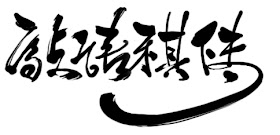During the Middle Ages calligraphy was a highly specialized technique practiced by monks and professional scribes. Medieval calligraphers developed a complicated Gothic, or black letter, script. This heavy, angular writing, although it was imprecise and difficult to read, became the accepted book hand throughout Europe and was copied by the first printers. There are outstanding examples of Gothic script in medieval illuminated
The profession of calligraphy reached its peak in Renaissance Italy. Renaissance scholars, however, found the intricacies of Gothic script inappropriate for the transcription of classical texts. They devised a less complicated style based on the earlier Caroline script developed during Charlemagne's reign. The Renaissance script, known as neo-Caroline, or humanistic, was the forerunner of modern handwriting.
































